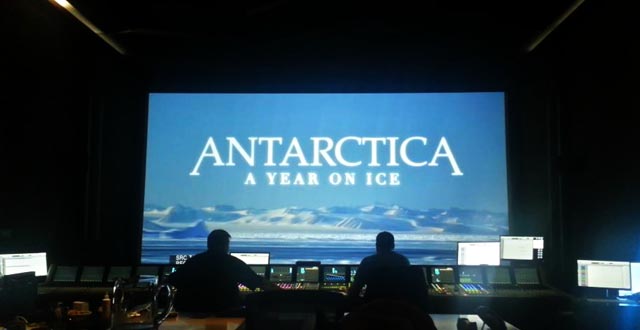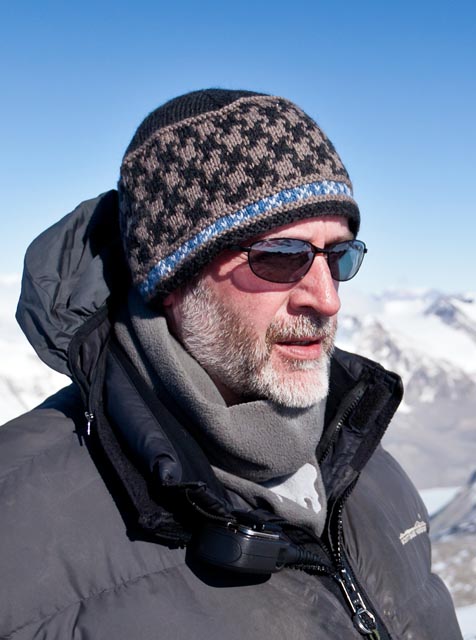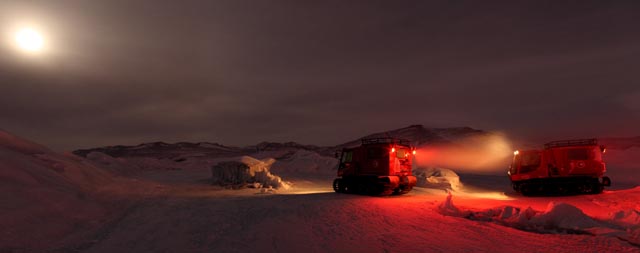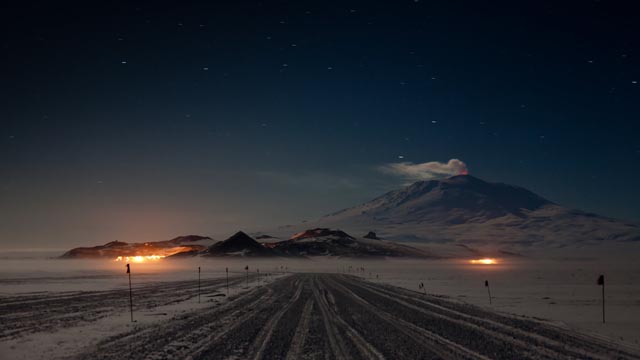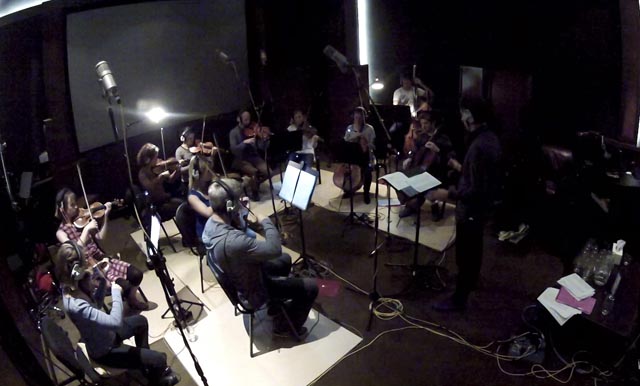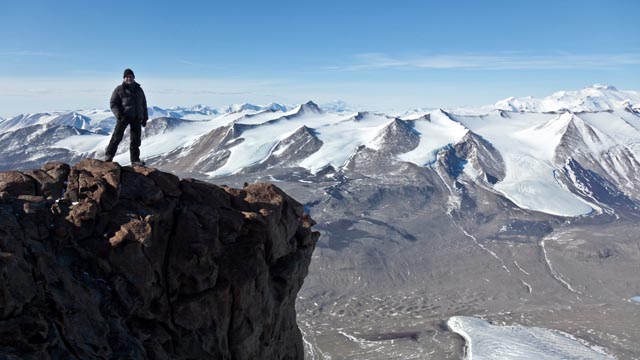|
Final countdownPowell wraps up Year on Ice documentary about AntarcticaPosted May 3, 2013
Anthony Powell has been working on his documentary about the world’s coldest continent for about a decade now. Finally, Antarctica: A Year on Ice will start hitting movie theaters this summer. “It’s been quite an experience. It will be weird when it’s finally done and out there. It’s been an ongoing project for so long,” Powell says. “I doubt I’ll ever get tired of taking photos, images of Antarctica, even if I wasn’t working on this movie.” That was the end of January of this year when Powell was in Wellington, New Zealand, completing the final edits to the film, a labor of love that began during his seven straight seasons of wintering through the dark months of Antarctica shooting time-lapse photography and film. The project gained additional traction in 2007 when Powell received support from the National Science Foundation’s Antarctic Artists and Writers Program Before then, he had worked as a satellite communications engineer at McMurdo Station “There’s been more than a sprinkling of Providence” in getting the documentary finished, according to Christine Powell. Help came last year thanks to an online Kickstarter campaign In fact, Powell has enlisted some of his country’s biggest names in New Zealand’s homegrown film industry, based in the capital on the North Island. In April, he began post-production work at Park Road Post Production “We’ve basically got some of the top talent in the country. They caught on to what was happening and wanted to be a part of it,” says Powell, who already has an Emmy to his credit for his footage that appeared in the BBC documentary series Frozen Planet. “I’ve always known [the film] would need outside eyes to look at it and make the hard decisions that I wouldn’t be willing to make myself,” he adds. “That’s the only way it’s going to be accessible and easily understood by people who haven’t been to the Ice. “Things that seem common to me may leave other people wide-eyed.” The film focuses on Powell’s stunning time-lapse photography, weaving in a narrative that tells what life is like over the course of one year in Antarctica. “I’m trying to capture the imagery and the impact it has on you — to put people in the experience as much as I can,” he explains, emphasizing that the story is told from the perspective of the people who work on the Ice. Powell created the time-lapse scenes by taking individual still photos on a digital SLR camera, then converting each individual photo into one frame of film. The effect is a time warp. Trailers of the film “[Time-lapse] was the only way to actually photograph anything in winter because the technology doesn’t exist even today to do anything decent that can capture the winter down there,” he notes. A rough, two-hour version of the film appeared at the first annual Ice Fest A Year on Ice has already been accepted for the New Zealand International Film Festival The film will begin appearing at film festivals across the world from late July onwards, and will also be available through a website called Tugg.com The Powells were last on the Ice during the 2011-12 austral summer, taking time off to finish the documentary. Powell says he expects the next year of promoting A Year on Ice will continue to keep them off the Ice — for now. “We’re both keen to go back again,” he says. NSF-funded research in this article: Anthony Powell, Antarctic Artists and Writers Program, Award No. 0637614
|



For USAP Participants |
For The Public |
For Researchers and EducatorsContact UsU.S. National Science FoundationOffice of Polar Programs Geosciences Directorate 2415 Eisenhower Avenue, Suite W7100 Alexandria, VA 22314 Sign up for the NSF Office of Polar Programs newsletter and events. Feedback Form |

